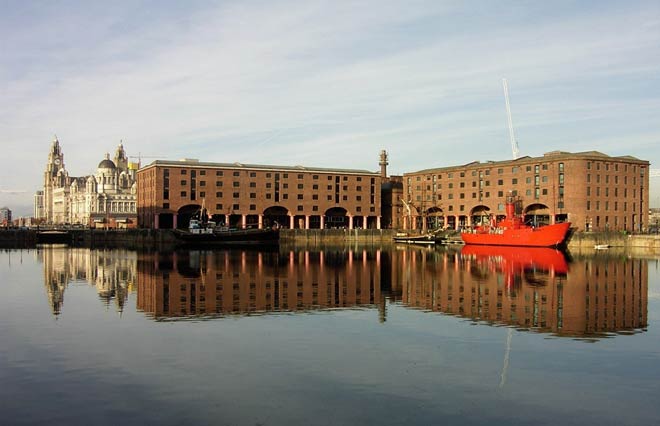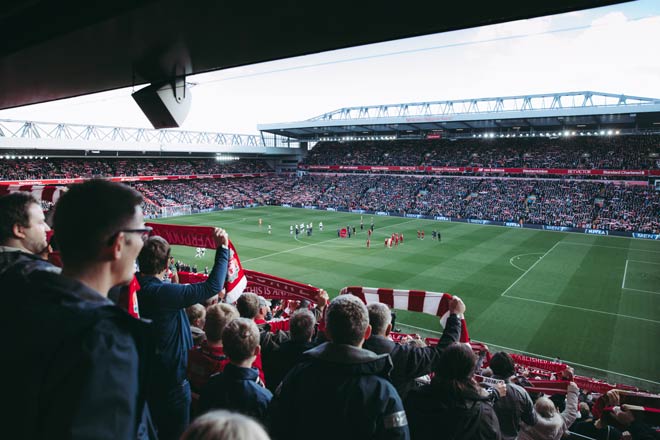If you’re looking for great property opportunities in the North West, buzzing Liverpool is a top choice for buy to let. A varied range of tenants, property types, and some of the best rental yields to be found anywhere in the UK mean investors’ eyes have been turning towards the Mersey. Read on for The Landlord Link’s guide to buy to let property in Liverpool.
Why choose Liverpool for buy to let properties
After some lean years in the 1970s and 1980s, massive regeneration in the last 20 years has seen Liverpool transformed. The riverside area is a real jewel, while the Albert Dock, one of the first Liverpool regeneration projects is now home to the Tate Liverpool art gallery. The city is currently attracting over £1 billion each year in investment; current schemes include the Knowledge Quarter, which aims to position Liverpool as a global city for innovation.
Employers in Liverpool come from a range of sectors, from the Jaguar Land Rover factory to the world’s second-largest wind farm. The life sciences industry is a key focus for Liverpool, and is worth in excess of £1.7 billion a year. The historic port is still thriving and is home to four of the world’s top six shipping lines.
Housing in Liverpool
As a large, growing city, there is plenty of choice in Liverpool’s housing stock. The most popular areas with the largest yields are mainly made up of terraced housing. Some of the more run-down terraces have been demolished, while other areas have been refurbished – Liverpool council famously sold terraced houses in L7’s Webster Triangle area for £1 to owner-occupiers who agreed not to sell the houses for five years.
In the city centre, apartments have been created inside old buildings as well as in purpose-built blocks. The Albert Dock was one of the first city-centre developments of its type, and has now been joined by hundreds more sleek waterside apartments, many with stunning views of the Mersey.
In common with many other university cities, Liverpool has a number of new student housing blocks located in L7 and L1, close to the University of Liverpool, Liverpool John Moores University and the School of Tropical Medicine.
Families looking for good schools and a villagey atmosphere gravitate to Aigburth and Allerton, while John Lennon’s childhood neighbourhood Woolton is still a prestigious and popular choice.

Best areas for buy to let in Liverpool
Landlords searching for good rental yields and affordable purchase prices will be spoilt for choice in Liverpool. No fewer than seven Liverpool postcodes appeared in Totally Money’s survey of the best areas to buy a buy to let property in 2020, so finding the right buy to let property in Liverpool to add to your portfolio should be a relatively simple task.
See properties for sale by landlords in Liverpool
L7: Edge Hill, Fairfield, Kensington
The L7 postcode area in Liverpool covers part of the city centre, along with the Edge Hill, Fairfield and Kensington areas. Most properties in L7 are terraced houses and the average price for this type of property is around £119,000.
Regeneration has improved the area (some parts could be described as up-and-coming) and it’s conveniently close to the city centre. The western edge of the area borders the Knowledge Quarter, University of Liverpool and the Royal Liverpool University Hospital (which will open a £429 million, state of the art new building in 2022).
L7 isn’t just the best postcode area for rental yields in Liverpool, it’s been crowned as the best area for buy to let in the UK for 2020. Yields in the area can be as high as 10.30%.
Sell your property in L7 for free on the Landlord Link
L1: Liverpool city centre
The L1 postcode area covers most of the city centre, from the Anglican cathedral in the south up to Liverpool Lime Street station in the north. Liverpool has a booming city centre living scene, and most properties in the area for sale are apartments in either converted period buildings or new builds. Popular parts of L1 include the Baltic Triangle, which is very close to the waterfront, and the Ropewalks area. Both locations have appeared on lists of the coolest neighbourhoods in the UK and are packed with shops, bars and cafes.
It’ll come as no surprise that properties in L1 tend to attract young professionals looking to live and work in Liverpool city centre, making use of all the amenities on their doorstep. There is also a sizeable student population and a number of modern student accommodation blocks have sprung up on the northern edge of L1 in recent years.
Rental yields in L1 are among the best for buy to let in Liverpool; choose your property well and you could see up to a 10% return on your investment.
L11: Norris Green, Croxteth and Gillmoss
The L11 postcode covers a large area towards the edge of Liverpool and is bounded by the A580 East Lancashire Road and the M57. The area is made up of low-rise, post-war housing (including large amounts of social housing) but with good access to green spaces and community facilities like schools, health centres and local shops.
Rental yields for landlords in L11 aren’t quite as stellar as in L7 or L1, but are still very attractive at 8.67%.
L6: Kensington, Anfield, Fairfield, Everton and Tuebrook
Liverpool L6 is a very varied postcode with a real mix of housing; terraced houses, grand Victorian townhouses and 300-year-old Georgian mansions next to 1940s semis. On the eastern edge of L6 you’ll find Newsham Park, a large green space with a cricket club, lakes, play areas and a skate park.
If you choose one of the L6 areas for your buy to let in Liverpool, you can expect a yield in the region of 8.4%.
List your rented property for free on The Landlord Link
L2: Liverpool city centre
The L2 postcode area covers the northern part of Liverpool city centre and contains some of Liverpool’s prime business real estate, mixed with luxurious apartments (many of them serviced) and hotels. It also covers the Cavern Club, Moorfields station and Liverpool Town Hall.
Rents in L2 are higher than in L1 (although that could be due to the lack of student accommodation in this area), but yields are lower at a still-solid 7.56%.
L3: City centre waterfront
L3 covers almost the entire city centre waterfront, from the Canada Dock oil port in the north, all the way down past the iconic Three Graces to the former garden festival site (now Festival Gardens) in the south. The area is home to the Albert Dock, Liverpool’s original regeneration project and model for inner-city living. It’s now been joined by Liverpool’s arena and exhibition centre, the Liverpool branch of the Tate art gallery, the Museum of Liverpool, and thousands of luxe apartments in a mixture of old warehouses and ultra-modern blocks.
Apartments with waterfront views command some of the highest property prices in Liverpool city centre, but rental yields for landlords of 7.4% are still achievable – and these covetable waterfront properties are in high demand by tenants.
L4: Anfield, Kirkdale, Walton
In the north of the city, the L4 postcode area contains the stadiums for both Liverpool and Everton football clubs. It also boasts two large parks. The Canada Dock railway line runs through the area – at the moment it’s only a goods line serving Liverpool’s docks but there have been repeated calls to open a station to serve Liverpool FC’s Anfield ground. If the plans come to fruition, a station could be good news for property investors and landlords in this part of Liverpool.
Rental yields for Liverpool landlords with properties in L4 are solid at 7.13%. Property types in L4 include larger Victorian villas, some of which have been turned into HMOs of 5-7 bedrooms, semi-detached homes, bay-fronted terraces and some pockets of modern estates and apartments.

HMOs in Liverpool
There are lots of HMOs in Liverpool, and in recent years there’s been an issue with oversupply, leading to Liverpool City council to put Article 4 directions on the number of HMOs in certain areas, including 14 streets in the Dales area of L15. Areas with these restrictions require landlords to apply for planning permission to create an HMO, rather than using permitted development rights. It’s worth noting that if you’re looking for rental property to buy in the wider Merseyside region you should check the policies of the local council, as Sefton, Knowsley, Halton and Wirral all have different policy positions on HMOs.
Landlords in Liverpool report that the oversupply of HMO rooms has increased tenants’ expectations from their home. HMO landlords in Liverpool should aim for fewer, larger rooms in their properties, with high quality furnishings, en-suites wherever possible and high-speed broadband. Ideally, HMOs should be close to bus routes either to Liverpool’s universities or to the city centre for maximum convenience, and have amenities like local shops nearby.
Buy to let properties for sale in Liverpool on The Landlord Link
On The Landlord Link, Liverpool landlords can list rental properties and HMOs for sale, absolutely free. Take a look at the buy to let properties for sale in Liverpool available now or sell your property today.
Data from Totally Money’s Buy to let Yield Map.




